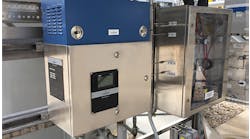Figure 1. Development Roadmap: The ultimate
objective of NeSSI is to enable the use of
microanalytical devices.
|
In one company where I worked, some process automation folks called analyzers "the technology of last resort." But these folks also were part of the problem because they didn't want to handle the multiple diagnostic inputs needed to adequately monitor performance of an extensive process analytical system. Typical analyzer-to-DCS connections include component concentration signals and an analyzer fault contact (and sometimes a flow switch in parallel) to give the ubiquitous "analyzer trouble" alarm. However the majority of diagnostic elements such as sample take-off pressures, sample disposal pressures, sample flow quantities, heat-tracing temperatures used to maintain sample dew points, filter performance, calibration system check flows, analyzer shelter environmental alarms and analyzer utilities that contribute to overall analytical system reliability typically aren't monitored. We generally remain analyzer-centric in predicting or reporting a failure to the process operator. This impacts reliability because an analyzer is only a small part (and in many cases maybe the most reliable one) of a multi-element system. To make things worse, the signals sent usually are discrete, don't predict the problem and only give an alarm when it's too late to do anything — by that time the plant may be down. When we attempt to become system-centric and send multiple signals to/from the control room, the cost of sensors, actuators, wiring and additional input/output (I/O) automation points (especially for conventional 4–20-mA signals) becomes very steep. To make matters worse, doing closed-loop control and adding logic functions (e.g., stream switching routines) using the DCS for sample system control invokes another layer of automation that's perceived as overkill by the process automation folks. Although many sampling system automation tasks (or applets) could be standardized across the process analytical discipline, we as an industry have yet to come up with an open modular solution. So even if we get our input (and output) signals serially to the DCS, programming costs tend to ramp up because of the need for custom programming.
An Ugly SecretMany sampling systems handle hazardous fluids (such as hydrocarbons and hydrogen) and are packaged enclosures. Yet the electrical engineer going out to map the plot plan for electrical hazardous area ratings doesn't classify the inside of an enclosure as a Division 1/Zone 1 environment — but that's what it is. We've learned to design and package our sample systems using a potpourri of protective methods and wiring techniques to allow at least some degree of automation — e.g., explosion-proof enclosures, air and inert purging, hydrocarbon gas detector interlocks, equipment encapsulation, intrinsic safety, filled conduit seals, rigid conduit and armored cables. Having to meet exacting requirements of various global electrical certification agencies intensifies the problem. It's difficult and expensive to automate a sample system to meet requirements of a Division 1/Zone 1 area. There are instances where we have used 4–20-mA analog signals to send pressure, temperature and flow signals from our sample systems to the DCS. (In NeSSI-speak, we call this generation 1.5). However this requires extensive wiring in a confined space; significant cost and effort need to go into design of cabling, intrinsically safe barriers, wiring and conduit to meet the electrical classification. In some cases as many as 30 I/O may be required to adequately monitor and control a system. Intrinsically safe networks such as Foundation Fieldbus and Profibus, at least today, aren't physically capable of handling smaller devices such as sample system components and don't have the intrinsic power capability to support multiple devices without costly extensions. Another critical barrier to automation has been lack of smaller sized devices (commensurate with the size of sample systems) such as actuators. Miniature actuators are scarce in the instrumentation field, so we haven't been able to borrow from that source. Low cost transmitters, now commonly available for instrumentation, aren't compact enough for a sampling system. The relatively smaller and fragmented market and unique technology requirements have kept the process analytical discipline from automating sooner. The long and torturous learning process needed to develop proper extractive sampling techniques has created a very conservative mindset regarding acceptance of new technology. In addition, slow recognition of process analytical as a true discipline that crosscuts traditional engineering boundaries (instrumentation, piping, electrical) as well as functional boundaries (lab, process control, maintenance, engineering) has hindered acceptance and understanding needed to address special requirements of process analytical systems such as a purpose-built bus and local control.
The SolutionNeSSI Generation II recognized the need for a bus specific to the needs of sampling in a hazardous environment. Two variants are at hand — Siemens provides one bus, called I2C, while the other comes from CAN in Automation (CiA) (see "Intrinsically Safe NeSSI Nears,"
www.ChemicalProcessing.com/articles/2008/147.html) and has been adopted by ABB. Both are intrinsically safe, ultra-compact and suitable for operation in Zone 1/Division 1 environments. They also can handle as many as 20 or 30 components. (The trick is to lower the voltage to 9.5 v to allow current loads in the range of 1 amp.) The first working examples of these buses essentially are modified extensions of on-board digital buses that have been silently operating, without a hiccup, for years inside many of our gas chromatographs. Once these buses and NeSSI-bus enabled sensors and actuators come to the marketplace, we have the tools in hand to automate our sample systems. It sounds easy but the need for different components to play nicely within a specified power budget will pose a challenge. Of course, if the sampling system isn't located in a hazardous area, the NeSSI bus can be used without an intrinsic safe power supply and associated power constraints.





